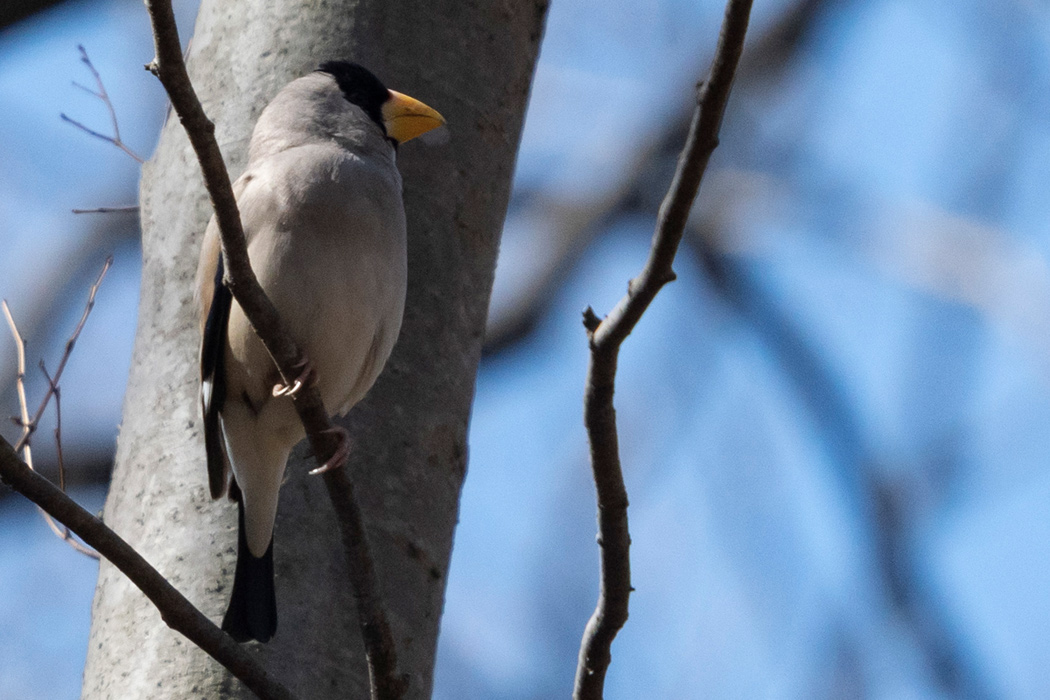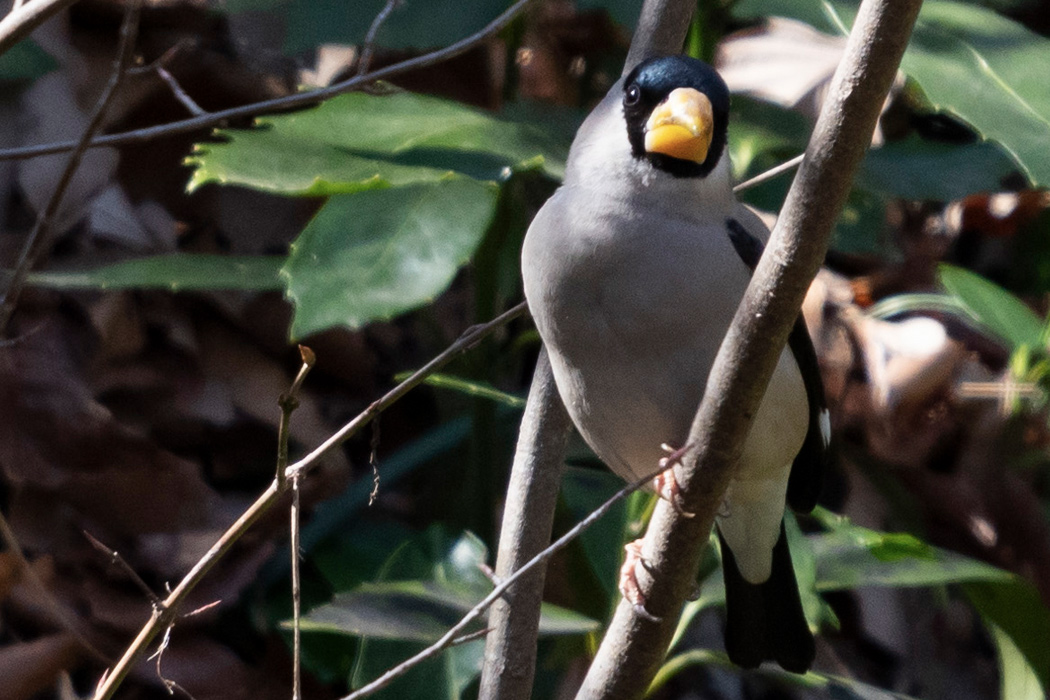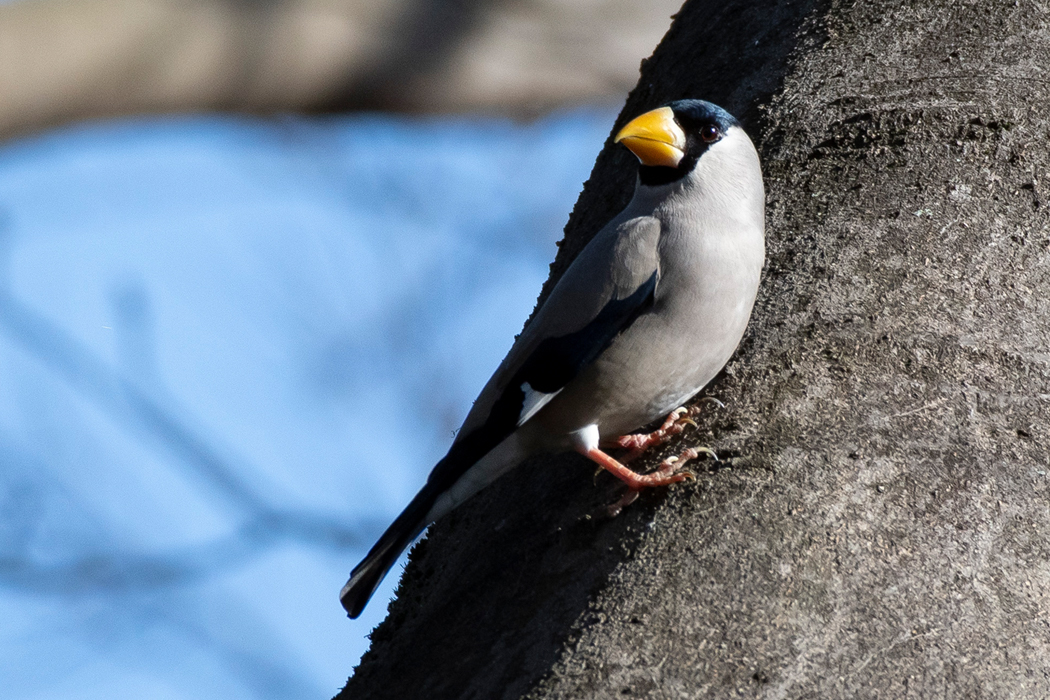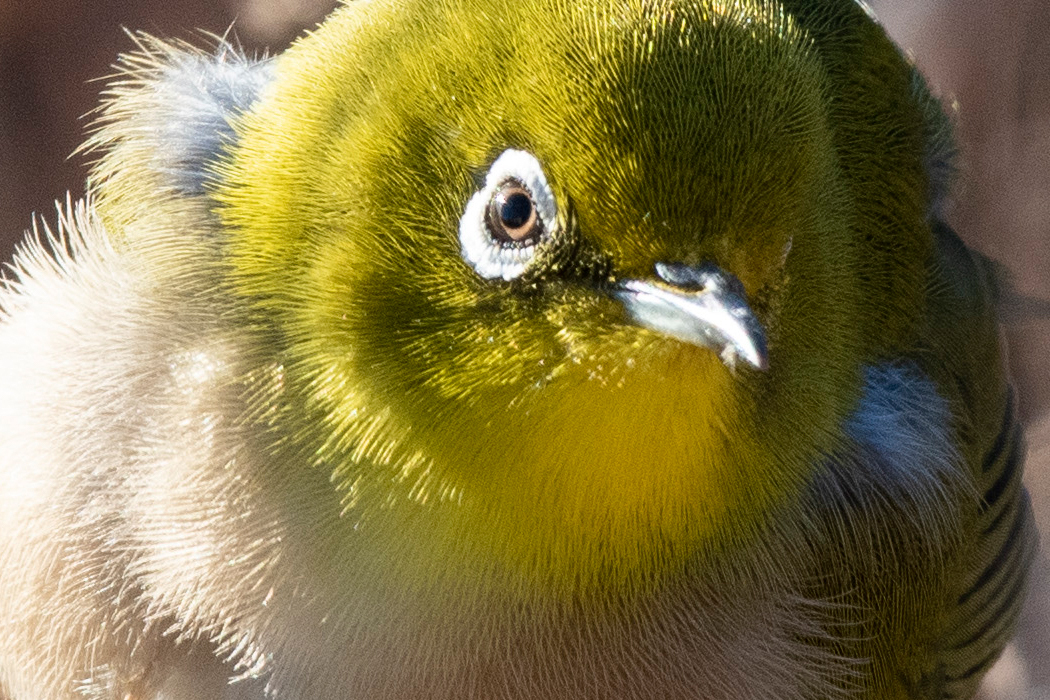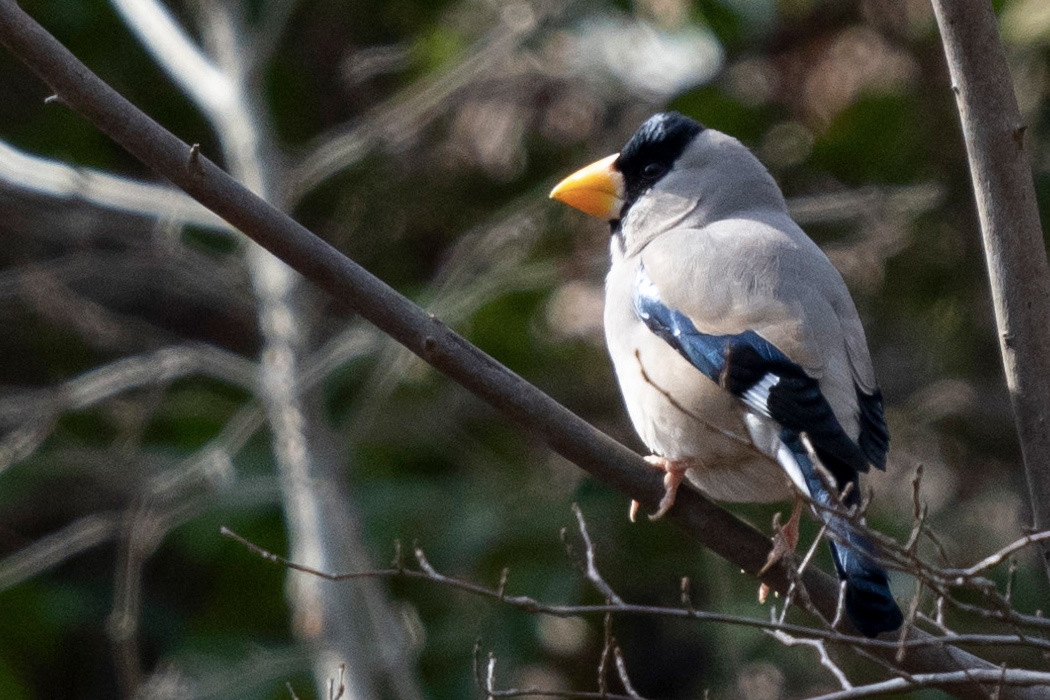
Japanese Grosbeak
yellow with strong beak.
| Scientific name | Eophona personata |
| English name | Japanese Grosbeak |
| Japanese name | 鵤 |
| Classification | Aves |
| Classification details | Passeriformes Fringillidae |
| Full length | 23cm |
| Distribution | Eastern Eurasia. |
Characteristics
A bird of the family Cuckoo, characterized by its strong yellow beak. Its Japanese name, 鵤, comes from its powerful horn-like beak. The males and females are the same color, the head to the back of the eyes is completely black, and the body is light brown. The flight feathers are navy blue, and the primary flight feathers have white spots.
Calls
It makes a short "kyo-kyo" sound or a chirping "kiki, kyoki" that seems to extend the end of the sentence.
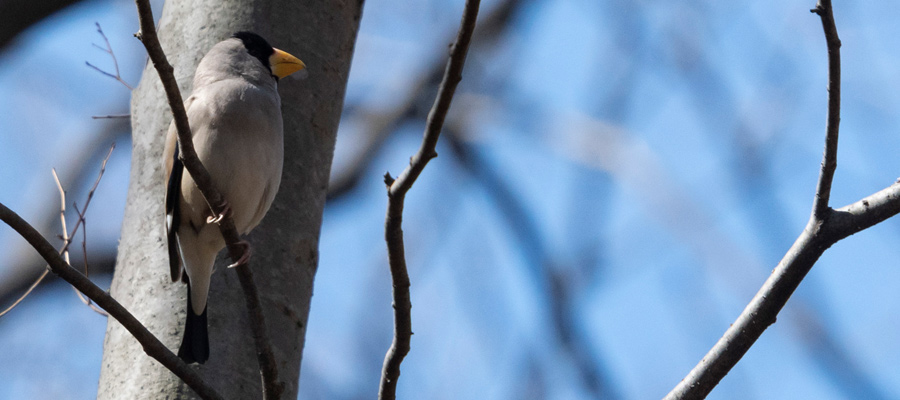
Ecology
They usually move in small groups on trees in forests. It eats nuts and seeds of plants with its hard beak. Sometimes they go down to the ground to eat. Several breeding pairs gather in early summer.
Habitat
Hachioji Komiya Park
Found in Komiya Park, Hachioji City. A flock of about six birds was looking for food while going back and forth between the trees and the ground. He was making a small "Kyo-Kyo" sound. When it was vertical, it looked very fat around the chest. The color of the body is very similar to that of the shime, but the color of the head and beak are different, so it can be distinguished.
Hachioji City Katakura Castle Ruins Park
Foraging on trees in Katakura Castle Site Park, Hachioji City. I heard a crackling sound coming from the tree, and when I searched the branches, I found a Grosbeak. After waiting for a while, he came out on a branch in the sun and was eating nuts.
Videos
The video of the Grosbeak.
Perched alone on a branch.
Foraging.
In the Horde.
Pictures
Introducing a picture of Japanese Grosbeak.

Picture book

Japanese grasshopper
a locust whose wings are longer than its legs.......ead more.

Seven-spot ladybird
Its red wings have seven spots.......ead more.
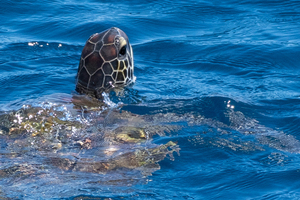
Green Sea turtle
The most familiar sea turtle.......ead more.

Common Glider
Blackish brown with three white lines running.......ead more.
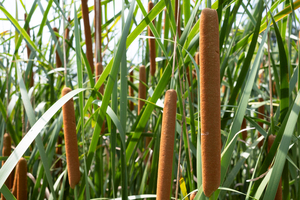
Southern Cattail
Produces brown flower spikes.......ead more.

